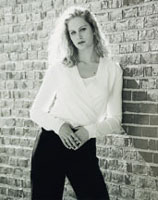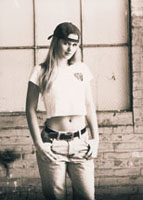Model Portfolios
First Time Shoot With A Beginner
The call typically goes like
this. "Hi, my name is Sandy. My friends keep telling me that I
should be a model. I don't know about that, but I need some portfolio
pictures so I can show them to people. Do you do that? Can you tell
me how much you charge?" |
|||
While it may seem self-evident,
the whole purpose of the model portfolio is so someone can look at a photo
of the model and see what she looks like, and if she has the particular
qualities the person desiring the shoot is looking for. How tall is she?
What color are her eyes? Hair? Does she look like the girl next door or
is she exotic or ethnic looking? Is she wholesome or sexy looking? Does
she look better smiling or serious? How are her hands, nails, and teeth?
Is she thin or average, small or large busted? These are all things that
should be answered in your photos. There's so much information to
convey that it usually takes more than one photo to do it in. That's
why most models have composites made of at least three pictures--a "head
shot," a full-length pose, and a third that can be rather flexible
to show what she wants. Let's look at each one individually. |
|||
Even though I consider outdoor
photography to be my strong point, I prefer doing the head shots in the
studio where I have precise control over the lighting and contrast. I
use very even light, usually two flash heads with an umbrella or big softbox
on each side. Many times I'll augment these with a silver reflector
placed just out of the frame and below to remove any eye lines and give
me a big catchlight in the bottom part of the eye. I shoot at about f/11
with a 70-300mm zoom lens that allows me to change my cropping instantly
without moving. When doing a head shot outside, I prefer very even light
also, and usually kick light in again from below with a silver reflector.
You can see this is a good job for the friend she brought along. |



































